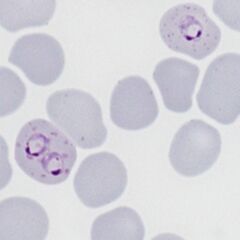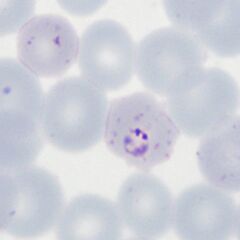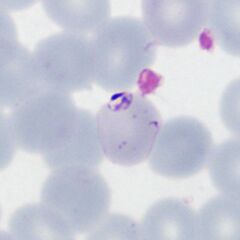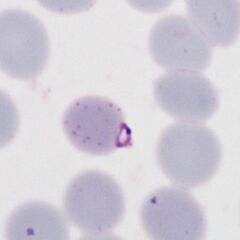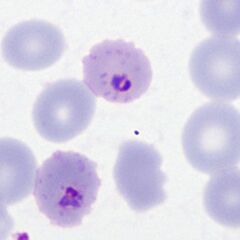P.falciparum late trophozoites gallery: Difference between revisions
From haematologyetc.co.uk
(Created page with "---- '''Navigation'''</br> Go Back ---- {| class="wikitable" style="border-style: solid; border-width: 4px; color:black" |colspan="1" style = "font-size:100%; color:black; background: FFFAFA"|<span style="color:black> {| class="wikitable" style="border-style: solid; border-width: 0px; border-color: #023020; color:black" |colspan="1" style = "font-size:100%; color:black; background: CBD5CO |'''''P.falciparum'' gallery of early tropho...") |
No edit summary |
||
| Line 7: | Line 7: | ||
|colspan="1" style = "font-size:100%; color:black; background: FFFAFA"|<span style="color:black> | |colspan="1" style = "font-size:100%; color:black; background: FFFAFA"|<span style="color:black> | ||
{| class="wikitable" style="border-style: solid; border-width: 0px; border-color: #023020; color:black" | {| class="wikitable" style="border-style: solid; border-width: 0px; border-color: #023020; color:black" | ||
|colspan="1" style = "font-size:100%; color:black; background: CBD5CO |'''''P.falciparum'' gallery of | |colspan="1" style = "font-size:100%; color:black; background: CBD5CO |'''''P.falciparum'' gallery of late trophozoites''''' | ||
|} | |} | ||
<span style="font-size:95%">'''Summary'''</span> | <span style="font-size:95%">'''Summary'''</span> | ||
<span style="font-size:95%">At this stage we look for typical | <span style="font-size:95%">At this stage we look for rings that are slightly thicker though still small with typical ring form, the red cells tend to become crenated and pale, losing central pallor as the parasites mature. Typical accolé forms, double chromatin dot forms, and multiple parasites within infected red cells are still present. | ||
---- | ---- | ||
Revision as of 00:18, 21 March 2024
Navigation
Go Back
|
